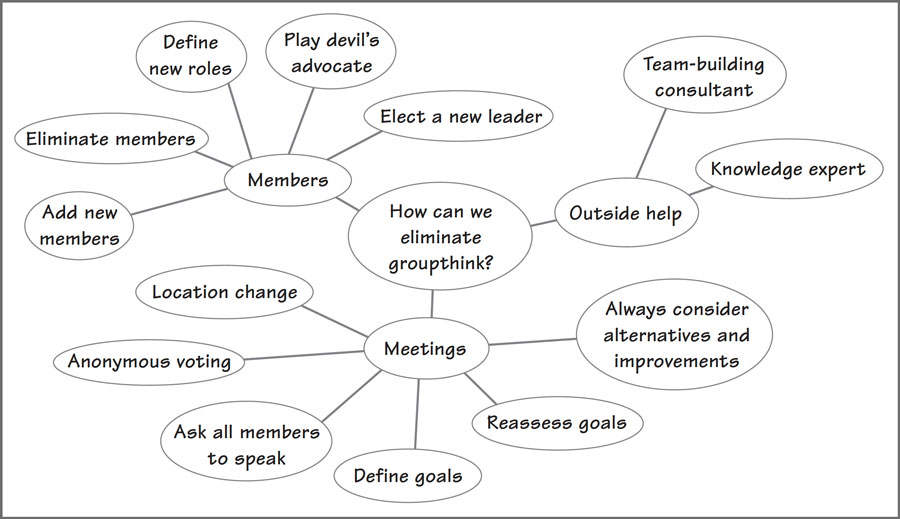Brainstorming
Brainstorming quickly spins out ideas about a topic. The initial goal is volume—producing many possibilities, even absurd ones. After you finish brainstorming, you can decide which ideas have promise.
Brainstorming
How Brainstorming Works
Brainstorming works best in a group because of the many differing perspectives, but you can also brainstorm on your own. Start with a question or topic, and then rapidly list as many ideas and connections as you can. Write down every suggestion—even wild ideas. Don't pause to judge, which will only stifle your creativity. Record your brainstorming by writing the question or topic and listing answers or connections below it:
How can we eliminate groupthink in the Council on Homelessness?
Add new members
Eliminate members
Play devil’s advocate
Encourage input from every member
Form outside committee to assess the situation
Bring in knowledge experts or team-building consultant
Elect a new group leader
Always ask “How else could we . . .” and “How could we make this better?”
Reassess our goals
Define our goals each meeting
Try a new meeting location
You can also record brainstorming on a mind map, or cluster. Write the question in the center and circle it; then write answers all around it and connect them. Note how this method encourages nonlinear thinking, with nodes that reach in different directions.

Advanced Brainstorming Techniques
You can get even more out of your brainstorming sessions by experimenting with advanced techniques:
Focused Brainstorming: After a brainstorming session, select a specific idea that you discovered and use it as the basis for a new brainstorming session. Repeat the process. As you continue, your focus will tighten, and the specificity of your ideas will sharpen.
SWOT Analysis: When you are considering a possible project or partnership, brainstorm its Strengths, Weaknesses, Opportunities, and Threats.
Gap Analysis: State your current situation and then the situation you want bring about. Brainstorm ways to fill the gap between the two.
Troublemakers: Start with a problem, but instead of thinking of ways to solve it, think of ways to cause it. Identifying ways to cause a problem helps you imagine ways to solve it.
Round Robin: Brainstorm by having each person offer one idea and then moving to the next person. Everyone must offer an idea before anyone can offer a second idea.
Rapid Ideation: Instead of having group participants shout out ideas, ask them to individually write as many ideas as they can. After a set period of rapid ideation, have participants share their ideas, seeing which are the most common and which are the most promising.
Creative Thinking Tools: Brainstorm using these creative-thinking strategies: